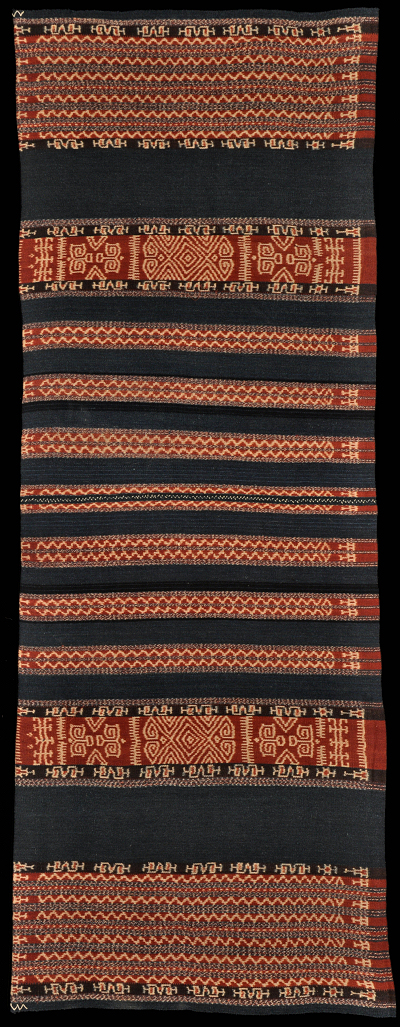| |
 
 | | | |
144 Savu Group, Savu
Ei (sarong) 
| | Locale: | Wini Wara Tada of Hubi Iki. | | Period: | 1935-1955 | | Yarn: | Cotton, hand-spun, fine | | Technique: | Warp ikat | | Panels: | 2 | | Size: | 55 x 155 cm (1' 9" x 5' 1") LW: 2.82 | | Design: | Ei ledo, hebe wo mea, probably for members of wini Wara Tada. The little zig-zag stitches at the top and bottom left corners are bunga wurumada, signaling that the ceremony required after the weaving and before sewing the cloth into a sarong was completed. | | Comment: | One our best loved pieces, on account of its warm tonality, and intriguing, masterfully executed patterns. | | Background: | Chapters on Savu Group and Savu. | | Exhibited: | Museu do Oriente, Lisbon, 2014/15.
Hong Kong University Museum and Art Gallery, 2017. | | Published: |
Woven Languages, 2014.
Ikat Textiles of the Indonesian Archipelago, 2018.
| | Sources: | Very similar to two sarong in Duggan, Ikats of Savu, Fig. 16, 26. | | |

©Peter ten Hoopen, 2025
All rights reserved.
|
|


